 I recently interviewed Shannon Lucas, Co-Founder & Co-CEO at Catalyst Constellations and best-selling author, regarding her new book (co-authored with Tracey Lovejoy) and the research leading up to it regarding a unique type of changemaker known as a Catalyst. Read on to find out if you are (or are managing) a Catalyst to gain a better understanding of a Catalyst’s particular needs, traits, and talents, and be sure to take the assessment and download the ebook and tools to learn more.
I recently interviewed Shannon Lucas, Co-Founder & Co-CEO at Catalyst Constellations and best-selling author, regarding her new book (co-authored with Tracey Lovejoy) and the research leading up to it regarding a unique type of changemaker known as a Catalyst. Read on to find out if you are (or are managing) a Catalyst to gain a better understanding of a Catalyst’s particular needs, traits, and talents, and be sure to take the assessment and download the ebook and tools to learn more.
MR: Shannon, welcome, and congratulations on the success of your new book, Move Fast. Break Shit. Burn Out. How did you and your co-author, Tracey Lovejoy, decide to write a book focusing on the needs of Catalysts?
Shannon: Thank you! We wrote the book we wished we’d had earlier in our careers.
Being Catalysts ourselves, we struggled more than we needed to for much of our lives because of a lack of understanding of the fact that we operate in unique ways. We didn’t have the frameworks to understand or contextualize how we showed up differently from our co-workers (or even our partners!). We didn’t have a language to describe it.
I spent years searching for descriptors that provided an understanding of how I operate—trying on identities like “innovator,” “entrepreneur,” and “intrapreneur.” But being a Catalyst is more than a job title or organizational context. It’s how we show up in the world.
When Tracey did the foundational research on Catalysts, the insights from the data were game-changing for both of us personally. We wanted to share those insights with the world.
We’re a mission-driven company creating a global Catalyst movement. In our dream world, Catalysts are connected to one another and understand and honor their unique qualities, which amplifies the creation of bolder and more powerful change in the world.
In order for this to happen, Catalysts must first be able to self-identify. So we created the Catalyst personal operating manual as a starting point. It creates a shared language and frame of reference for Catalysts around the world—the essential foundations for a global movement.
There is a lot of literature about change management, innovation, entrepreneurship, but not a lot out there about the changemakers themselves. Further, there’s not enough literature about how to support the unique innate change makers who will literally (unintentionally) sacrifice their well-being to drive change in the world. And of course, a burnt-out Catalyst creates no change at all.
We need fired-up positive changemakers now more than ever. The survival of the planet depends on it.
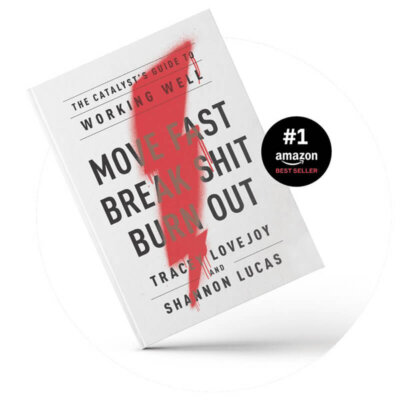 MR: Many people probably want to think of themselves as doers who make some type of impact. But how do you know if you’re a Catalyst? What are the tell-tale signs? What does it mean to be a Catalyst?
MR: Many people probably want to think of themselves as doers who make some type of impact. But how do you know if you’re a Catalyst? What are the tell-tale signs? What does it mean to be a Catalyst?
Shannon: Catalysts aren’t your typical changemakers. They’re innovators who can’t stop taking in information, connecting dots, and changing the world—even when the world hasn’t asked for it.
Catalysts are the ones who thrive on discussions around change, even when they realize they can’t manifest them all. They’re the ones who see possibility as a form of play, rather than getting annoyed or overwhelmed. And they’re the ones who burn out from moving at the speed of light. If that sounds familiar, you aren’t broken, difficult, or an incurable workaholic. You’re a Catalyst.
It’s an innate way of being, it’s not a choice. Though sometimes we wish we had a choice.
At a high level, Catalysts have six attributes. Let’s take them one by one.
First of all, we piece together information quickly. We synthesize data from a variety of sources on an almost visceral or ethereal level. We connect dots from conversations, business articles, sci-fi books, customer feedback, movies, and more.
From that, we see many ideas and see lots of possibilities. From all of that synthesizing, we start to see myriad possibilities of the way things could improve, from projects at work to standing in line at Starbucks.
We create visions, distilling down all the possibilities we saw into concrete visions for how our project, team, system, or family could be improved.
If we stopped there, we might just be called visionaries.
But we have a deep drive for ACTION that transforms. We have a relentless, almost physical need to see that vision manifested in the world. We move fast into action to make it a reality.
As Catalysts, we move through the world with an experimentation mindset. Because we are often creating net-new solutions, there often isn’t a tried-and-true way of achieving our vision. We are comfortable trying new approaches to create change. In fact, if we’re too familiar with a process, we’re likely to get bored.
The final attribute of being a Catalyst is less about how we feel and more about how people describe us. We are often told that we are intuitive and perceived as comfortable with risk and ambiguity. This is more how people describe us than how we might actually feel. We have all the data from step 1, so it actually feels like common sense to us by the time we start moving into action. We can’t always explain the dot-connecting in a clear enough way for people to understand, so it can be perceived as intuition (which also can be part of our process).
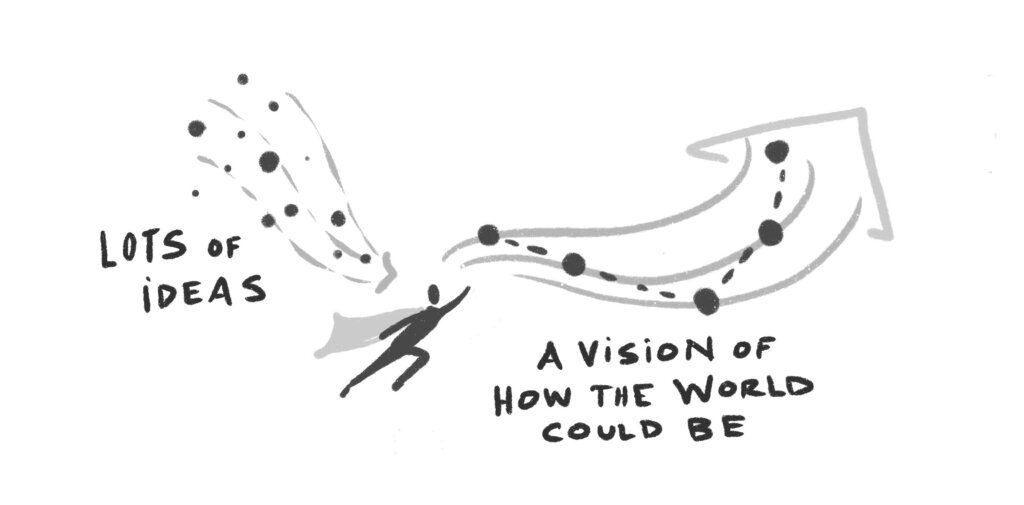
It’s important to us that people own the term Catalyst. While we have a lot of data that we can leverage to help companies identify their Catalysts, we’re not out to put unwanted labels on people or keep people out of the community.
If you’re curious about whether or not you’re a Catalyst, you can take our Catalyst quiz. But if it already sounds like you and you love the term, welcome to the global community!
MR: In your consulting practice, you help organizations identify Catalyst employees, nurture their exceptional skill set, and advise on internal change and transformation projects that accelerate change, increase success, and retain high-potential employees. What are the unique needs of Catalysts that managers and leaders need to understand and nurture?
Shannon: This is the time of the Catalyst.
Last year removed any doubt that we live in a Volatile, Uncertain, Complex, and Ambiguous (VUCA) world. And Catalysts are essentially born VUCA-ready. This is why so many companies are excited to find these action-oriented problem-solvers.
We recently released an eBook, The Catalyst Innovator’s Guide to Thriving in an Uncertain World, which speaks to the C-Suite about the impact that Catalysts can have helping their organization navigate our VUCA reality. We captured key lessons from C-Levels about what it takes to enable a Catalyst-friendly environment, which in turn helped these companies thrive during the pandemic.
The good news: the things that are essential for Catalysts to be successful are good for everyone. Google’s Project Aristotle looked at the attributes of high-performing teams and outlined five attributes that mirror exactly the types of support Catalysts need:
- Psychological Safety
- Dependability
- Structure and Clarity
- Meaning
- Impact
More specifically for Catalysts, though, it’s helpful if managers take the time to understand how we operate so that they can help us by:
- Providing air cover
We’re often invited into roles to challenge the status quo which can cause some pretty strong opposition responses from the corporate immune response system. Having executive sponsorship and air cover removes a lot of resistance, accelerates impact, and minimizes the personal trauma Catalysts can experience as the lightning rod for that organizational pushback. - Monitoring the Catalyst’s pace and energy
Catalysts can move too fast for teams or an organization. Moving too fast can increase resistance for lack of understanding, alignment, and buy-in. Moving at speed and then tackling that resistance can lead to burnout before the Catalyst even knows what’s happening. Having a boss who suggests slowing down, taking a break, or even taking some time off can really help the Catalyst over the long term. - Keeping us from getting too far in front of the organization
Our pace can be too fast and our vision too big. It’s helpful to have a manager who provides clear feedback when we need to slow down and clear guardrails for how far we can push. - Helping overcome resistance
In addition to providing air cover, sometimes we need our leaders to get in the trenches with us, either brainstorming ways to help us bring people along, or actually removing obstacles for us. - Accepting that our problem-solving has limits
Catalysts are innate problem-solvers. Not solving problems can feel like a deep failure for us. So when we ask for help troubleshooting something, it’s incredibly helpful if the manager—at any level—understands that we really have exhausted all possibilities and that we truly need an ally to help us overcome the challenge. - Celebrating our wins
Catalysts have a tendency to unconsciously move the goal post, which over time can drain our energy because we feel like we have never successfully accomplished our goal. Because Catalysts always see the next better vision, and because Catalysts are high performers, it can feel like the first goal was achieved too easily, even though when we started it might have seemed unattainable. So when managers take the time to help us celebrate our wins, it provides that extra wind in our sails, helping us remember what we have accomplished. Then we can go on to slay the next dragon.
MR: This is fascinating and so timely. It’s really significant that you’ve decoded this and made it easier for organizations and leaders to support these invaluable Catalysts! So how does sustainability enter into the equation?
Shannon: We need to focus on sustainability, resiliency, and regeneration at all levels: the personal, the organization, the ecosystem, and the world.
For example, tackling climate change requires attention and engagement at all levels to solve these complex systems issues. For individuals, taking on the emotionally challenging and draining work of climate action could lead to burnout and despair. To be successful, it requires highly energized change agents with the skills to manage their own energy (and those around them), so that they can stay engaged and continue to drive real impact. The same can be said for teams and organizations.
The reason I am passionate about the work we do is that there are a lot of books and models out there about creating change, but little to no support for the actual changemakers. It takes a lot of emotional labor on the part of those who are driving the change. Overcoming people’s resistance is a part of the work. This can take its toll on an individual’s ability to continue to create change.
What we’ve seen over the past decades in the sustainability movement is that that work can’t be separated from human development, human evolution, and human needs.
We need executives who are evolved leaders, who are thinking from a deep systems perspective. We need leaders who embody resilience and regeneration. We need empowered Catalyst leaders who aren’t afraid of ambiguity and who bring an experimentation mindset to solving complex problems.
Systems that leave people depleted or treated like disposable objects stemming from a paradigm of resource consumption (chew up that employee and spit them out) are unlikely to cultivate the types of regenerative solutions we so desperately need right now. If our organizations function from that paradigm, how can we expect to get different outcomes in other areas of consumption?
We need to shift to truly regenerative systems—including for the Catalysts. We can’t use the same thinking that got us here to get us out of the terrible situation we find ourselves in today.
We need empowered, energized Catalysts—those innate systems-thinking, action-oriented problem-solvers—solving these massive global challenges.
MR: For those who do identify as Catalysts, how do we make ourselves understood? Are there a few tips you can share for better self-talk and talking points for colleagues?
Shannon: One big challenge we Catalysts have is being able to articulate our value. We are super-fast dot connectors who create future-ready visions of where the organization needs to go. We activate people to get there. And we drive for results.
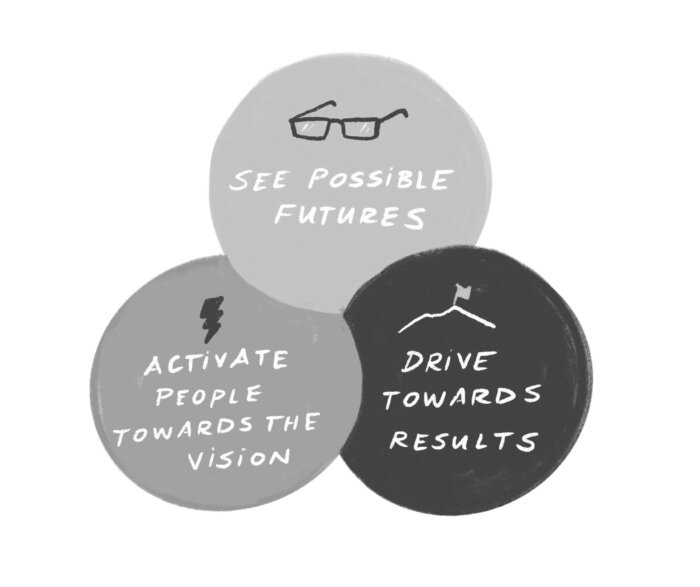
These aren’t bullet points that you find on most job descriptions.
Because of that, Catalysts can lack self-confidence, even though they often drive tremendous impact.
Getting clear on those three points gives Catalysts the language to articulate their value.
We certainly aren’t advocating for everyone to start introducing themselves to bosses, hiring managers, or colleagues as Catalysts. But once a Catalyst has self-identified, we have created tools for individuals to use in their discussions with their managers about how to set them both up for success.
Catalysts can have a large inner-critic that can be really detrimental to both our success at work and general happiness in life. We’ve been told we’re “too fast,” “too opinionated,” “too arrogant,” “too sensitive,” or just “too much.” And because we’re more comfortable with ambiguity and risk, and are often pushing people and systems in uncomfortable ways, we have more than our fair share of “failures.”
If I could offer one key takeaway from the book, it would be to practice self-compassion. We often didn’t realize how differently we operated. We didn’t know how others were receiving our change initiatives. Catalysts are, by definition, trying to improve the world.
Self-compassion allows you to give yourself the room to learn, fail, grow, experiment, and be the wonderfully unique changemaker that you are, no matter what anyone has said before.
MR: At one point or another, we’ve all had to “do more with less,” especially in response to business cycles or extraordinary events like a global pandemic. This mindset, in turn, can bring on burnout quite easily. What are you seeing now in the midst of Covid-19, in terms of trends?
Shannon: This is a big question right now. We’re living through The Great Resignation, where people are reevaluating their jobs and what they expect from their employers—including people looking for companies that actually care about their wellness—more than traditional benefits or the ping pong tables and nice lunches that are no longer relevant.
Burnout numbers (and depression and anxiety) hit all-time highs last year for obvious reasons.
What’s interesting about the Catalyst community is that even though burnout is often part of the Catalyst journey, last year we saw a lot of Catalysts actually thriving. Organizations were desperate for problem-solvers who could help them navigate ambiguity and uncertainty. Many Catalysts had seen new organizational structures, solutions, or ways of engaging with their customers that started getting attention and sponsorship after March 2020.
Our eBook, The Catalyst Innovator’s Guide to Thriving in an Uncertain World, is a collection of stories about Catalysts that helped their companies not just survive last year but actually thrive.
This is the time of the Catalyst.
MR: So, then, are we burning out even more by working from home? It’s too easy to not stop working at the end of the day in these extreme WFH times. What’s your advice?
Shannon: As mentioned earlier, burnout numbers have never been higher. The lack of boundaries between work and home, the demands of taking care of children while trying to work, taking on additional caregiving activities while having few of our normal rejuvenation activities available to us have put a massive strain on society.
During pre-pandemic times, Catalysts often suffered from burnout as part of our energy cycle while creating change. Dealing with the inevitable resistance to change can be draining, and often leads to burnout if we’re not careful.
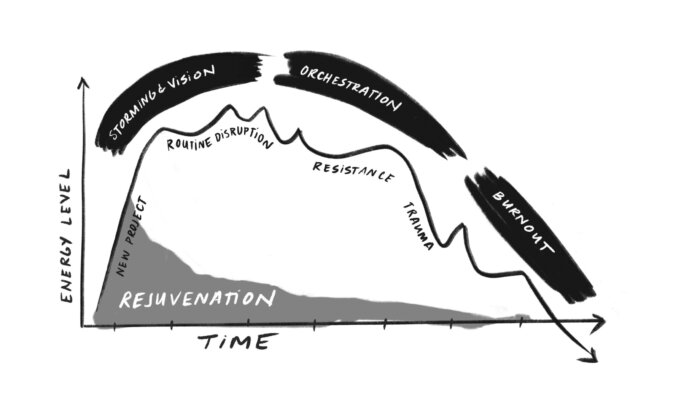
Our advice to Catalysts (and beyond) is to prioritize yourself. Put your own oxygen mask on first.
The first step to doing this is monitoring how full your energy tank is and which elements of your energy maintenance need attending to. There are lots of different types of energy reboot activities we may require.
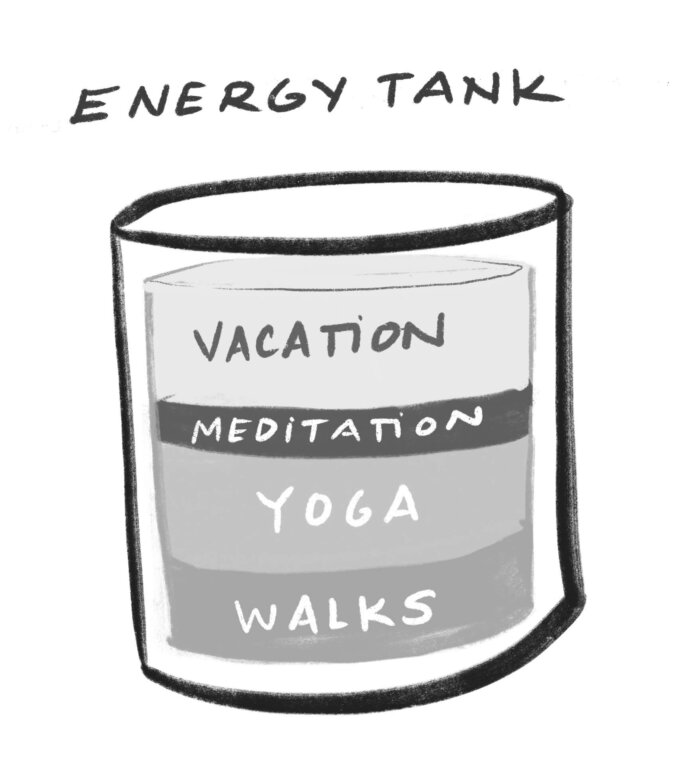
And then, once you’ve started noticing where you are and what you need, the next piece is to schedule the time for your recharge activities and put them in your calendar. Treat them like a customer meeting or meeting with your boss. Find an accountability buddy.
We know that this is all easier said than done, especially during a global pandemic.
But we also know that burned-out Catalysts create no change at all.
Once Catalysts make the connection that this isn’t fluffy “self-care” but that we are actually conduits for the change and can only be successful when we have the energy to move forward, they’re more likely to start prioritizing activities that will at least minimize cycles of burnout.
MR: That’s such a relevant and important message. What advice do you have for people looking to create positive change? How do the principles in your book apply to impact creation?
Shannon: The biggest piece of advice I can give is to maximize your empathy. As change agents, we can often be good at leveraging our empathy when we’re looking at stakeholders, customers, and citizens outside our organization. We’ll crystallize a vision based on what we’ve sensed, backed up with a lot of data, and come back in the building ready to drive hard to realize that vision.
In the process, we’ve forgotten that people have different relationships to change, and our vision might scare them. And we often forget to find the shared wins for the internal stakeholders we need to work with, to help them overcome their resistance to change and become active supporters.
Innovation is personal. Change is personal. This is why we need to meet people where they are, and take them on the change journey with us.
It’s a lot of emotional labor. And it can be easy to resent having to do all that additional work.
But if you see the change you need to make in the world, chances are high you can’t do it on your own.
Leveraging your empathy and compassion is a great foundation for creating lasting impact.
MR: Shannon, thanks so much for taking the time to speak with us and for sharing your exciting work, research, and free tools. Is there anything else you’d like to share with our readers?
Shannon: I’d love to hear from you about your journey! I know there are a lot of Catalysts in the Presidio community. Drop me a line at Shannon@catalystconstellations.com. We’re here to support you. The world needs all the super-charged Presidio Graduate School alums!
Ready to become a Presidian and level up your ability to create positive impact? There’s no better time than now to make a change—for yourself and for the world. Learn more about our MBA, MPA, Dual Degree, and Certificate programs, and then start a conversation with us!

